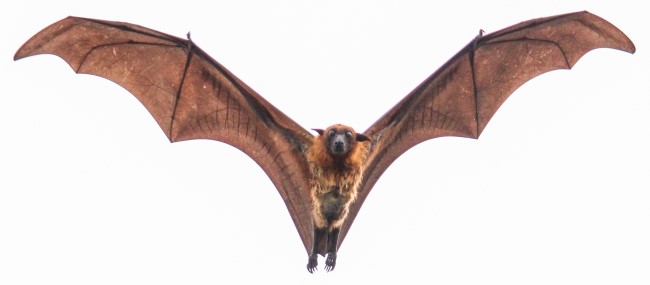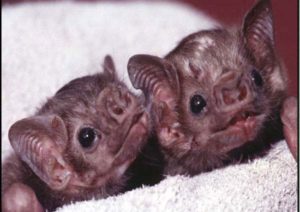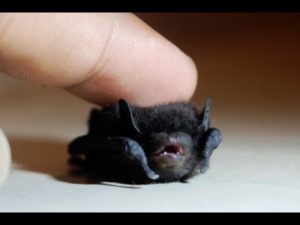Camping & Survival
Bats In Your Belfry? Here’s What to Do

AUGH! Get the broom! There’s a human in my house!
It’s that time of year: Short, sultry nights full of buzzing cicadas, chirping crickets and the barely audible calls of the bats that see all of the above as an all-you-can-eat buffet. Although you probably think of bats as being more active later in the year–say, just in time for Halloween–late summer and early autumn is actually when you’re most likely to find one in your home. The baby bats (also called pups) are learning to fly and leaving their roost for the first time. Here’s what you should know about bats, and what to do if you find one in your home.
The first thing to know is that your unwelcome houseguest is probably a lady with babies. The females typically come out of hibernation and take up residence in a structure to give birth, usually in May or June. They then have their babies and begin to eat as much as possible so they can make milk (and if you’re currently struggling not to picture a nice cold glass of bat milk, we’re sorry to have ruined that for you). The young are also becoming more active and starting to fly, so now is the time to spot bats a-plenty.

Goo-goo, ga-ga!
Says DWR Mammal Conservation Coordinator Kimberly Hersey, “This time frame is the hardest time of year for dealing with bat nuisance issues. Since the young can’t fly yet and are reliant on their mother’s milk, preventing the mothers from returning to their roosting spot will kill the babies. Because bats are a protected wildlife species, it’s illegal to kill them.”
Well, here’s the problem with that. Bats are one of the most common carriers of rabies, and therefore most people aren’t really stoked to share a living space with them. So, first thing to know: Never handle a bat with your bare hands. If you find a bat inside your home, open a door or window, turn off the lights inside your house and turn on a porch light outside. Leave the room and allow the bat to leave on its own.
If the bat does not make its way outside on its own, you can carefully remove it. Wearing heavy leather gloves, place a small box or can over the bat. To create a lid, slide a piece of cardboard between the can and the wall or curtain, enclosing the bat inside the container. Then take the bat outside and release the bat on a tree or other high object. If you suspect there is a colony of bats in your attic, you will need to contact a local, permitted wildlife nuisance control company for help.

Nooo! I am Nosferatu! I am the night!
So, the upshot is that once they’re there, the bats are a pain in the butt to get rid of. Here’s what to do in the future to keep them from getting there in the first place. Cool your attic with fans to make it uncomfortable for bats to take up residence. Inspect the outside of the building for openings and gaps in siding, chimneys and roof lines. Seal cracks and holes with caulking, hardware cloth, foam rubber, foam sealant, tar paper and chimney caps. Do not do this, however, when bats have pups in May through August. Fall is the best time to seal these openings when bats are vacating roosts.
You can also use bird netting to place over an opening. Staple it down at the top and the sides, leaving the base open. Bats will be able to drop down the netting to leave, but not reenter the roost. Leave it in place for four to five days or until all the bats have left, then seal the holes.
What about The ‘Rona? Although COVID-19 originated in bats, there is no indication that North American bats have been exposed to the disease. Because of the remote potential for humans to spread the disease to bats, bats captured in a home with a known or suspected COVID-19 case should not be released.








